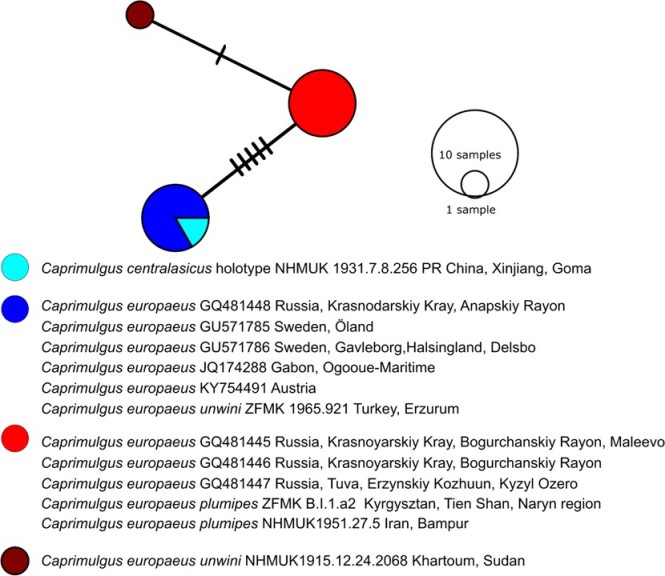Genetic and morphological analyses shed light on the identity of this illustrious bird.
Time for an ornithological mystery. In September 1921, Frank Ludlow collected a peculiar nightjar in western China. Initially, it was considered an Egyptian nightjar (Caprimulgus aegyptius). A few decades later, however, Charles Vaurie described it as a new species: the Vaurie’s nightjar (C. centralasicus). And that is all we know about this species. Several expeditions to the Taklamakan Desert in Central Asia (in the 1970s, 1990s and 2004) failed to find any trace of this nightjar. Did the species go extinct? Was it even a distinct species?
These circumstances are reminiscent of species that turned out to be hybrids, such as Rawnsley’s Bowerbird (Ptilonorhynchus rawnsleyi) or Imperial Pheasant (Lophura imperialis). Perhaps Vaurie’s nightjar is a hybrid? A recent study in the Journal of Ornithology tried to solve this mystery.

The only specimen of Vaurie’s nightjar. From: Schweizer et al. (2020) Journal of Ornithology
Morphology and Mitochondria
Manuel Schweizer and his colleagues retrieved the only known specimen of Vaurie’s nightjar from the Natural History Museum in Tring for detailed morphological and genetic analyses. They sequenced one mitochondrial gene (COI) and compared it to other nightjar species. The DNA sequence from the Vaurie’s nightjar specimen turned out to be identical that that of several European nightjars (C. europaeus). Could it be an abnormal specimen of this widespread species?
Next, the researchers turned to morphology. They contrasted the Vaurie’s nightjar with numerous other nightjar species. These comparisons indicated that we are not dealing with Nubian nightjar (C. nubicus) or Sykes’s nightjar (C. mahrattensis). And we can also rule out the Egyptian nightjar, the species it was first confused with. The plumage coloration of Vaurie’s nightjar does match that of European nightjar, but the specimen is much smaller than this species. The researchers suspect that it might represent a not fully grown fledgling.

The haplotype network of the mitochondrial gene COI shows that the Vaurie’s nightjar (lightblue) clusters with the European nightjars (darkblue). From: Schweizer et al. (2020) Journal of Ornithology
Mystery Solved?
Did we solve the mystery of the Vaurie’s nightjar? In the conclusion section of the paper, we read the following: “Based on the combined evidence from molecular genetics and morphology, we recommend that Caprimulgus centralasicus is better considered a synonym of Caprimulgus europaeus, belonging genetically to the eastern mtDNA clade of this widespread Palearctic species.”
Case closed! Well, not entirely. The authors admit that they cannot rule out the possibility that the Vaurie’s nightjar is a hybrid. That would require more than just one mitochondrial marker. I am looking forward to the genomic study!
References
Schweizer, M., Etzbauer, C., Shirihai, H., Töpfer, T., & Kirwan, G. M. (2020). A molecular analysis of the mysterious Vaurie’s Nightjar Caprimulgus centralasicus yields fresh insight into its taxonomic status. Journal of Ornithology, 1-16.